Spiders inspired biologists to create artificial webs to capture airborne DNA for biodiversity monitoring
A bit of Halloween decoration is proving to be as effective as natural weavers at catching eDNA
Protect, restore and promote sustainable use of terrestrial ecosystems, sustainably manage forests, combat desertification, and halt and reverse land degradation and halt biodiversity loss

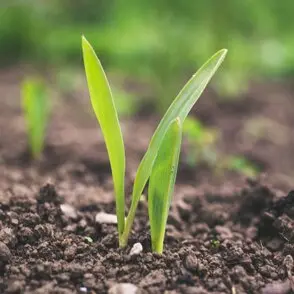
Professor Louis Schipper and the team at WaiBER who are progressing a raft of research projects focused on increasing soil carbon content and removing carbon dioxide from the atmosphere.
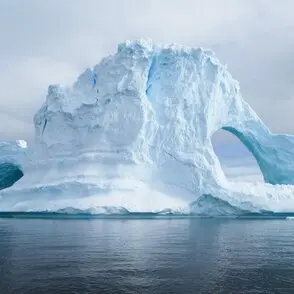
Associate Professor Sandy Morrison who is a lead researcher in the Deep South Challenge focused on exploring how indigenous knowledge, alongside science, can help prepare communities for climate change impacts.
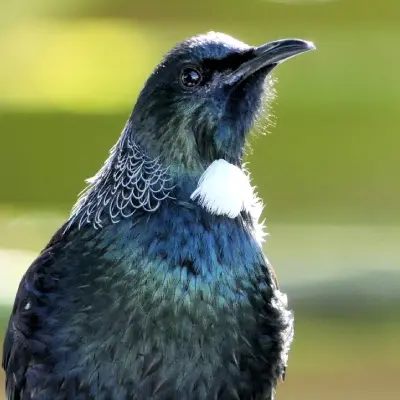
Dr Kiri Wallace’s work as the co-leader of the BioHeritage Eco-index team helping to reverse biodiversity decline in New Zealand and re-create ecosystems in our cities using a social justice lens.
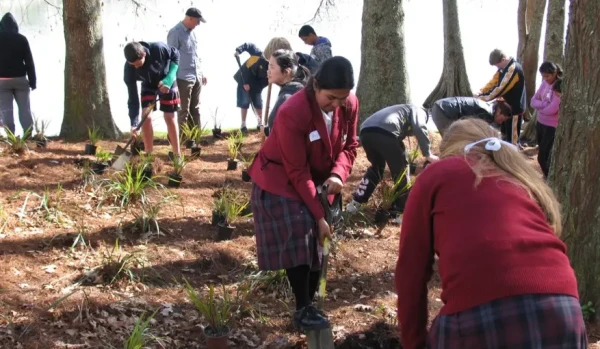
We have 2,500+ trees on our Hamilton Campus, of which over 2,000 of them are native. Our 65-hectare Hamilton campus is home to a wide variety of native and exotic flora and fauna, including several groves of kahikatea and many other native trees, including rimu, tītoki, kauri, tōtara, miro, rewarewa, kōwhai, tī kōuka (cabbage tree), kāpuka (grisellinia), nīkau, and kānuka.
Our Hamilton campus also has three lakes, the edges of which host a wide range of wetland plants; our native fern collection includes more than 70 New Zealand ferns. We have established eco-sourced plants from the Waikato Basin, which feature below Gate 10.
We have combined our longstanding expertise in data science and environmental science to keep better tabs on the state of our natural environment, so authorities can make informed decisions before it's too late.
The MBIE-funded, $13 million project TAIAO, led by Professor Albert Bifet, collates environmental data from around the country and makes it available to scientists, ultimately so informed decisions can be made more quickly. The computer program performs a range of tasks including detecting algal blooms on waterways with minimal human involvement. It also checks DOC predator cameras and helps map at-risk trees using satellite imagery.
Boggy, peat soils across large portions of the Waikato region are among the densest natural carbon stores in New Zealand. However, efforts to drain these areas to make the land farmable has led to twice the amount of carbon emissions than previously calculated and will continue to do so for years to come.
Soil science experts Professor Louis Schipper and Associate Professor Dave Campbell have been focused on the many aspects of this problem and say while re-flooding the peatlands would stem carbon dioxide losses, they are also testing to what extent raising the water table while keeping farming can reduce the losses.
The duo are key members of a team called WaiBER at the University of Waikato, who are progressing a raft of research projects focused on increasing soil carbon content and removing carbon dioxide from the atmosphere.
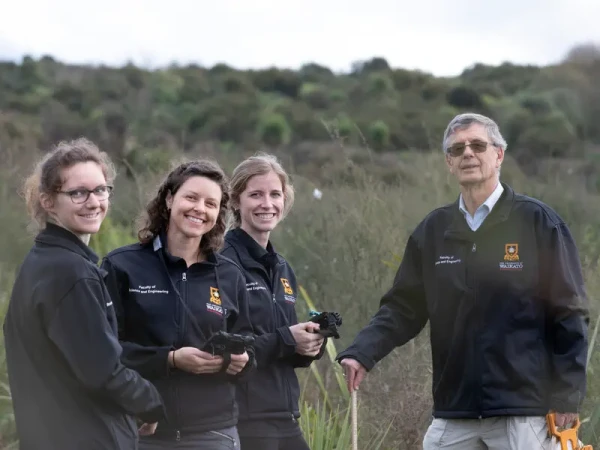
Professor Bruce Clarkson secured $10 million in 2021 for a research project called Restoring Urban Nature, courtesy of funding from the Ministry of Business, Innovation and Employment (MBIE). The project aims to restore Indigenous ecosystems and develop high-quality green spaces in urban landscapes and suburban backyards.
The multidisciplinary project builds on Professor Clarkson’s previous project People, Cities and Nature, another five-year MBIE-funded programme which has transformed urban spaces in the Waikato, Hawkes Bay and Taranaki regions.
Professor Clarkson’s work was also recognised when he was awarded the prestigious Hamilton Kirikiriroa Medal in recognition of his work restoring Waiwhakareke Natural Heritage Park. Over 16 years, he was the driving force in transforming the 65.5 hectare council-owned site from farm paddocks into an internationally acclaimed regenerating native forest, wetland and a lake ecosystem rich in biodiversity.
You’re currently viewing the website as a domestic student, you might want to change to international.
You're a domestic student if you are:
You're an International student if you are: